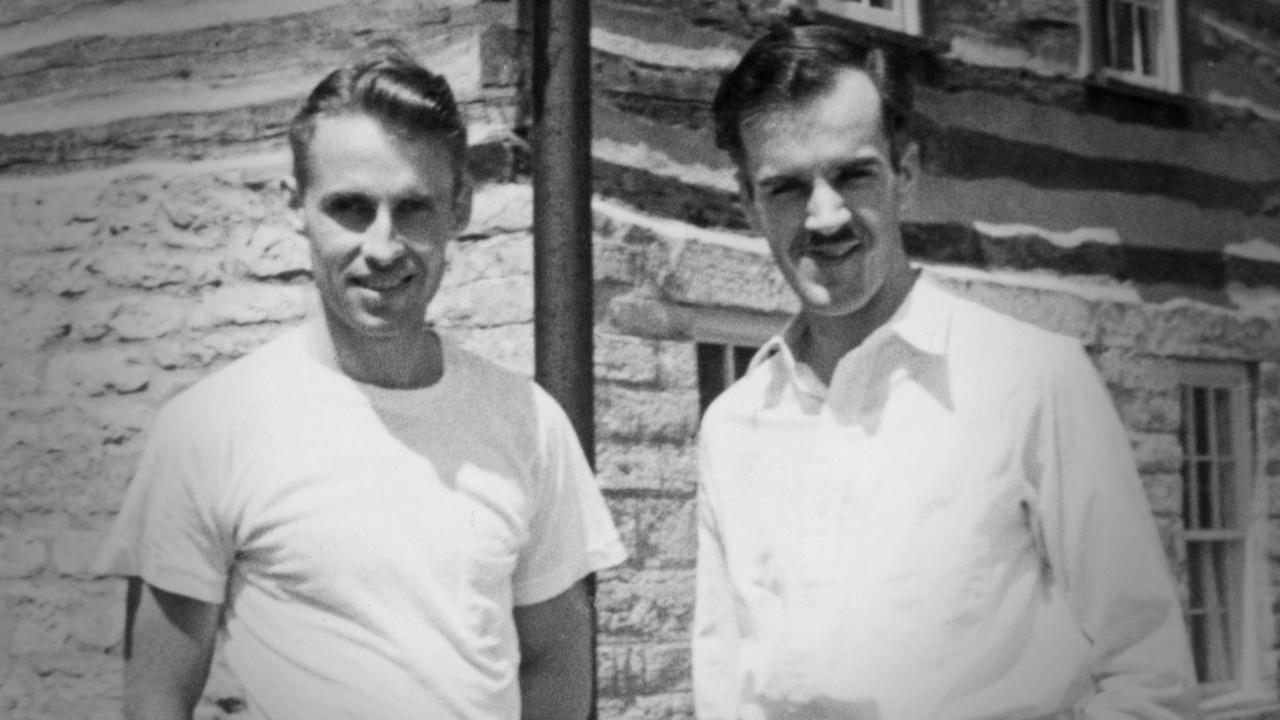Wisconsin Pride – Ralph Kerwineo
§ §
Narrator: Across the state in Milwaukee, another man of the time, Ralph Kerwineo, was hiding in plain sight.
Kai Pyle: Ralph Kerwineo was a Black and Native man who was extremely stylish. If you look at his photos, he’s got it going on…
[chuckles]
for sure!
Narrator: Kerwineo’s style would fly in the face of the era’s strict policing of gender expression.
Kai: Ralph became briefly infamous in Milwaukee in 1914. He was arrested by the police for allegedly passing as a man and marrying two women. He was known as the ‘Girl-Man of Milwaukee.’
Narrator: Born in Kendallville, Indiana, and raised as Cora Anderson, Kerwineo hoped for a career in one of the few fields available to women. In 1900, while in nursing school in Chicago, Kerwineo met Mamie White, and the two started out life together. However, both struggled to find work at a time when immoral doctors could take advantage, demanding sexual favors before hiring. With few opportunities, the two young nurses calculated a man’s wage would make their life together much better.
Kai Pyle: They decided to move to Milwaukee, and this person started to live as the person known as Ralph Kerwineo.
Narrator: Kerwineo found work as a bellboy at the Plankinton Hotel. Then, as a factory hand. White kept care of their home. They appeared to all as a traditional husband and wife. Then, as happens in many relationships, troubles began.
Kai Pyle: Ralph, in Mamie’s eyes, started to get too… comfortable with his expression as a man. Coarse in his habits, going out with other men after work. Eventually, they split. And a little while later, Mamie discovered that Ralph was seeing Dorothy Kleinowski and that they were, in fact, getting married.
Narrator: Hurt and angry at Kerwineo, White showed up at his workplace under the guise of applying for a job. Told they had no work suited for women, White revealed they already had a female employee and uncovered Kerwineo’s secret.
Kai Pyle: This blew up all over the papers.
Narrator: Kerwineo was arrested. In 1914, it was against the law to wear the clothes of another gender.
Kai Pyle: I can’t imagine being incarcerated and then paraded through newspapers, having your name dragged all over the place.
Narrator: The name being dragged was Cora Anderson, the identity Kerwineo had long left behind. His effort to live honestly as he saw himself would be called dishonest and deceptive.
Kai Pyle: It’s a story that tells us a lot about the way gender-variant people have been criminalized in the past.
Narrator: Kerwineo was forced into a dress as part of a sensational public trial.
[judge banging gavel]
In St. Louis, history was waiting for him at the finish line.
Kai Pyle: He was released as long as he promised that he “would return to wearing skirts,” as they put it.
Narrator: At the end of the trial, Kerwineo was quoted
“When we leave this court, Kerwineo will be dead. My name when I leave here will be Cora Anderson.”
[dramatic orchestra]
But Ralph Kerwineo would not die.
Kai Pyle: After his arrest, he went around with some vaudeville circuits. He would start off the show dressed as a woman, then show up as a man, vice versa.
Narrator: And he kept presenting as male for long after the infamous trial.
Kai Pyle: I think it shows a lot of resilience on Ralph’s part. It was 1914, and we can’t necessarily apply labels from today to somebody who lived a hundred years ago. But he said his woman’s soul had died, and a man’s soul had taken its place. Ralph was going to do whatever Ralph wanted. Whoever he was, he had a strong spirit and free will.









 Passport
Passport






Follow Us